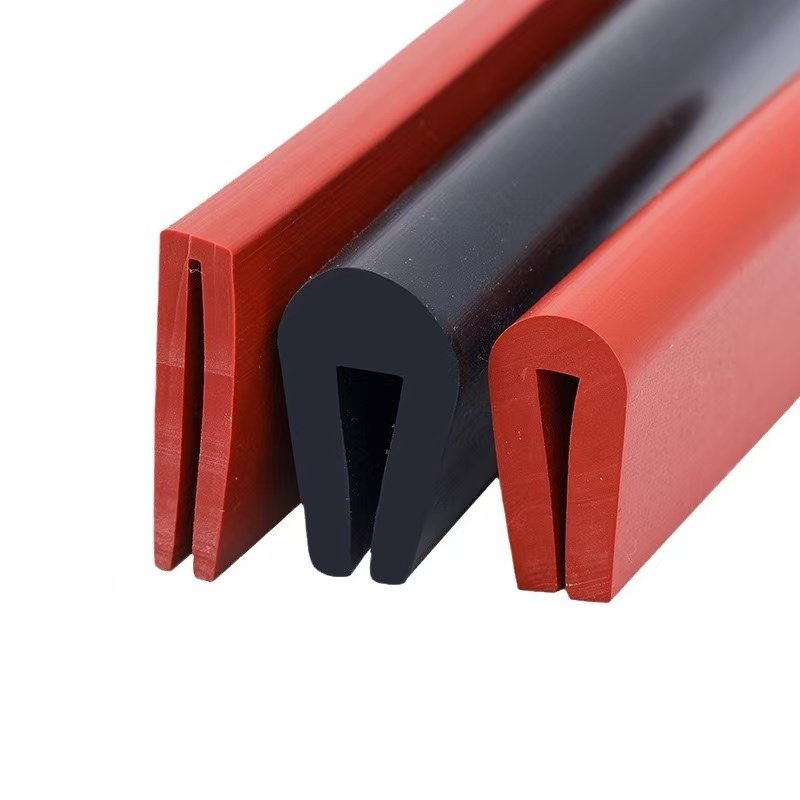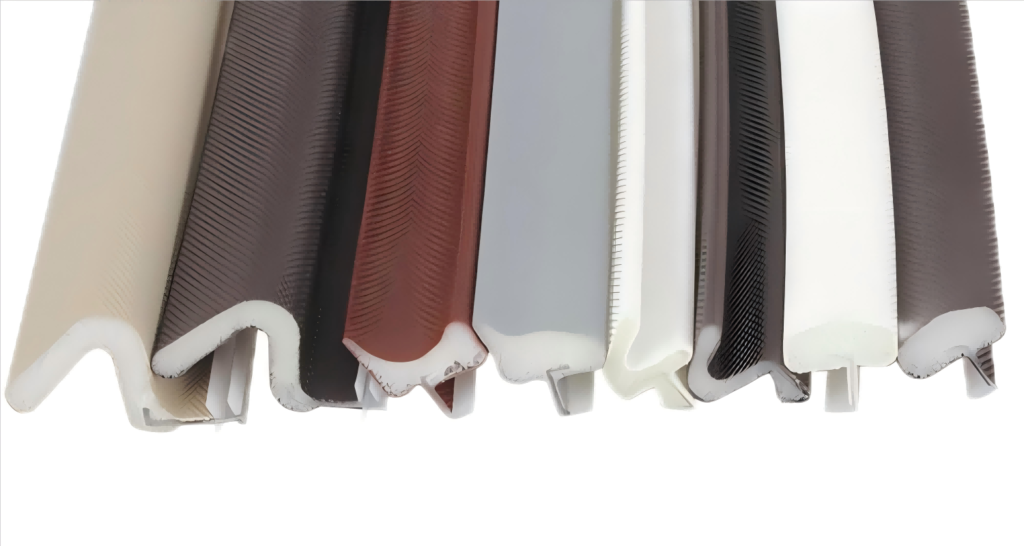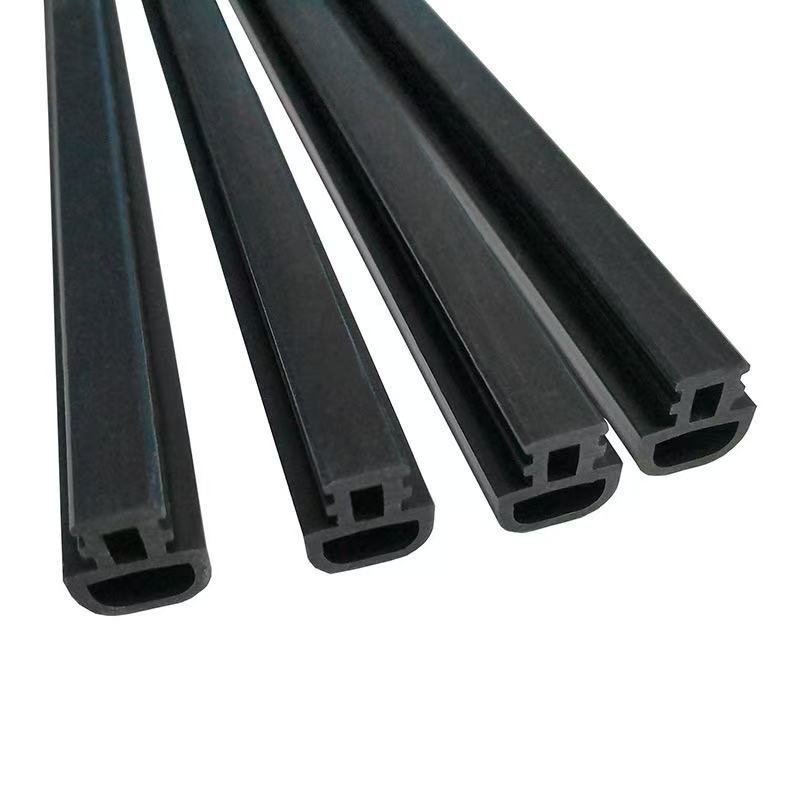Materials
Rubber seals are made of various elastic composite materials, and each seal strip is made of different raw materials according to application requirements. The main materials include:
Nitrile rubber (NBR/Buna-N):
Features: NBR is not corroded by oil and does not react chemically with oil; the second one is more flame resistant;
Use: Used in the fuel system of the car, or as an O-ring); the second one can be used as a raw material for industrial hydraulic systems.
Temperature range: -40°C to 120°C.

Silicone:
Features: It will not be corroded in high temperature environments, retains the original chemical and physical properties, is resistant to high and low temperatures, and can be used at -60°C to 230°C. The second one is compatible with biomaterials and is relatively environmentally friendly compared to raw materials;
Use: It can be used in medical facilities and used as a syringe seal. 2. Due to its high and low temperature resistance, it is used in the aerospace field and can be used as an engine gasket.

EPDM (ethylene propylene diene monomer rubber):
Features: It can adapt to various harsh environments and maintain good physical properties in an environment of more than ten degrees below zero. It is ozone resistant and relatively environmentally friendly
Uses: Due to its good properties, it is widely used in outdoor fields, such as in the gaps of car doors, curtain walls of some high-rise buildings, etc.

Viton® (FKM/fluorocarbon):
Features: It is relatively corrosion-resistant and not afraid of chemicals and fuels;
Uses: It can be used in the chemical field, and it is also needed in aerospace fuel systems.
Neoprene:
Features: It does not react with oil, has strong oil resistance, is relatively practical, and has a long service life.
Uses: It is widely used in refrigeration, such as freezers and refrigerated trucks. 2. It is used as some equipment for research in the marine field.
Polyurethane (PU):
Features: It is relatively wear-resistant and has good resilience
Uses: It is used for hydraulic seals and some mechanical equipment.

Thermoplastic Elastomer (TPE):
Features: Environmentally friendly, recyclable; relatively strong flexibility, good elasticity
Use: It can be used in household appliances and accessories in cars.
Additives and enhancers:
Features: Manufacturers usually add carbon black (to reduce UV interference), antioxidants (to reduce oxidation) and plasticizers (to make the rubber strip more elastic)
Use: 1.Improve the quality and performance of the rubber strip.
- Manufacturing process
Each manufacturer’s manufacturing process is different, but the process is roughly the same. - Compression molding:
The principle is to use pressure and pressure difference to heat the raw materials through the mold to form;
Many gaskets use this process.
Injection molding:
Complex shapes using thermosetting materials are formed in a machine. For example, O-rings.
Extrusion:
The raw materials are poured into the machine, and the rubber strip is extruded through the mold. After a certain length of cooling, the rubber strip is formed.
Transfer molding:
Injection molding and compression technology are used together to produce some precision parts, such as diaphragm seals.
Molding of Liquid Silicone Rubber (LSR):
Sterile, high-precision medical components are suitable for this purpose.
Post-processing:
Quality is ensured by vulcanization (the principle is to cross-link the polymer, which makes it more durable) and some surface treatment of the rubber strips (such as lubrication). Quality control includes pressure testing and dimensional inspection.
Applications
Rubber seals are used in various industries:
Automotive: cylinder head gaskets (nitrile rubber), door seals (EPDM) and transmission seals (ACM).
Aerospace: fuel system seals (Viton®), engine components (silicone) and hydraulic systems.
Industrial machinery: hydraulic piston seals (PU), pipe gaskets (EPDM) and wind turbine gearboxes.
Medical: implantable device seals (silicone), dialysis machine components (LSR) in accordance with USP Class VI standards.
Consumer goods: refrigerator door seals (TPE), smartphone waterproofing (silicone).
Food Processing: FDA-compliant seals for machinery that processes edible products or food-grade products.
Marine: Saltwater-resistant neoprene seals for marine systems.
Key Considerations
Static vs. Dynamic Seals: Static (fixed joints) use EPDM; dynamic (moving parts) require durable materials such as PU.
Environmental Factors: Temperature, chemical exposure, and UV resistance influence material selection.
Standards: ISO, FDA, and aerospace certifications (such as AS9100) ensure reliability.
Future Trends
The future of innovation is sustainable materials (bio-based elastomers), 3D-printed custom seals, and smart seals with embedded sensors for real-time monitoring.
Conclusion
Rubber seals are essential to facilitate smooth system operation and improve system life.
Sealing strips play an integral role in modern technology and industry, and we should make good use of them.




